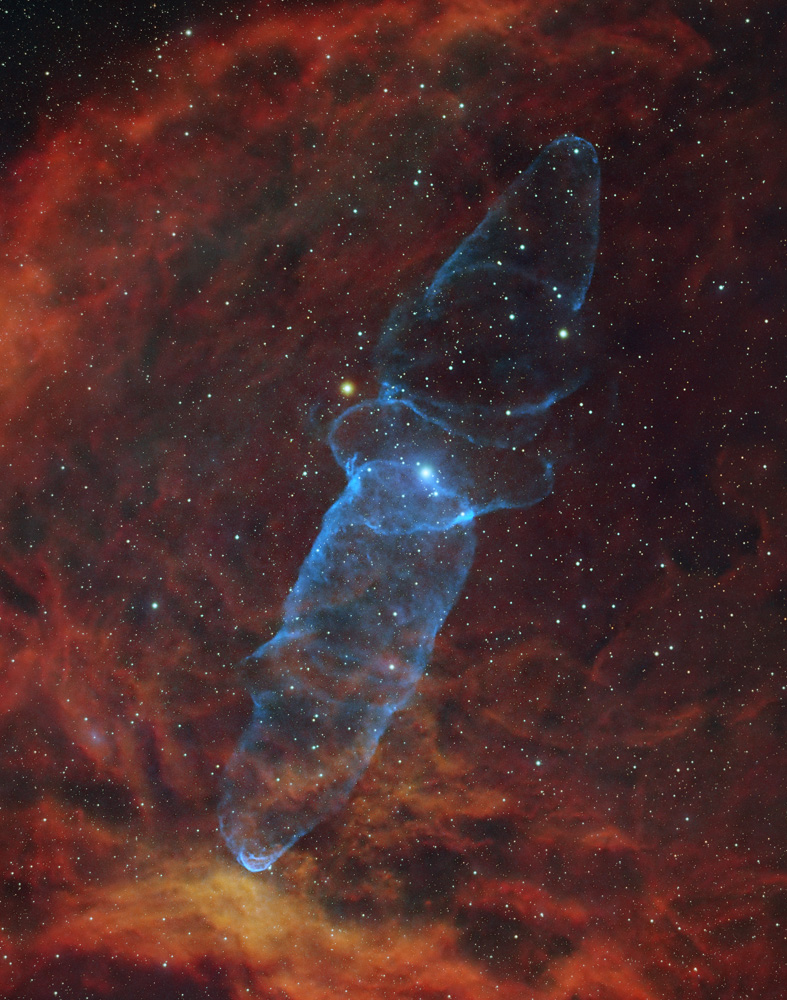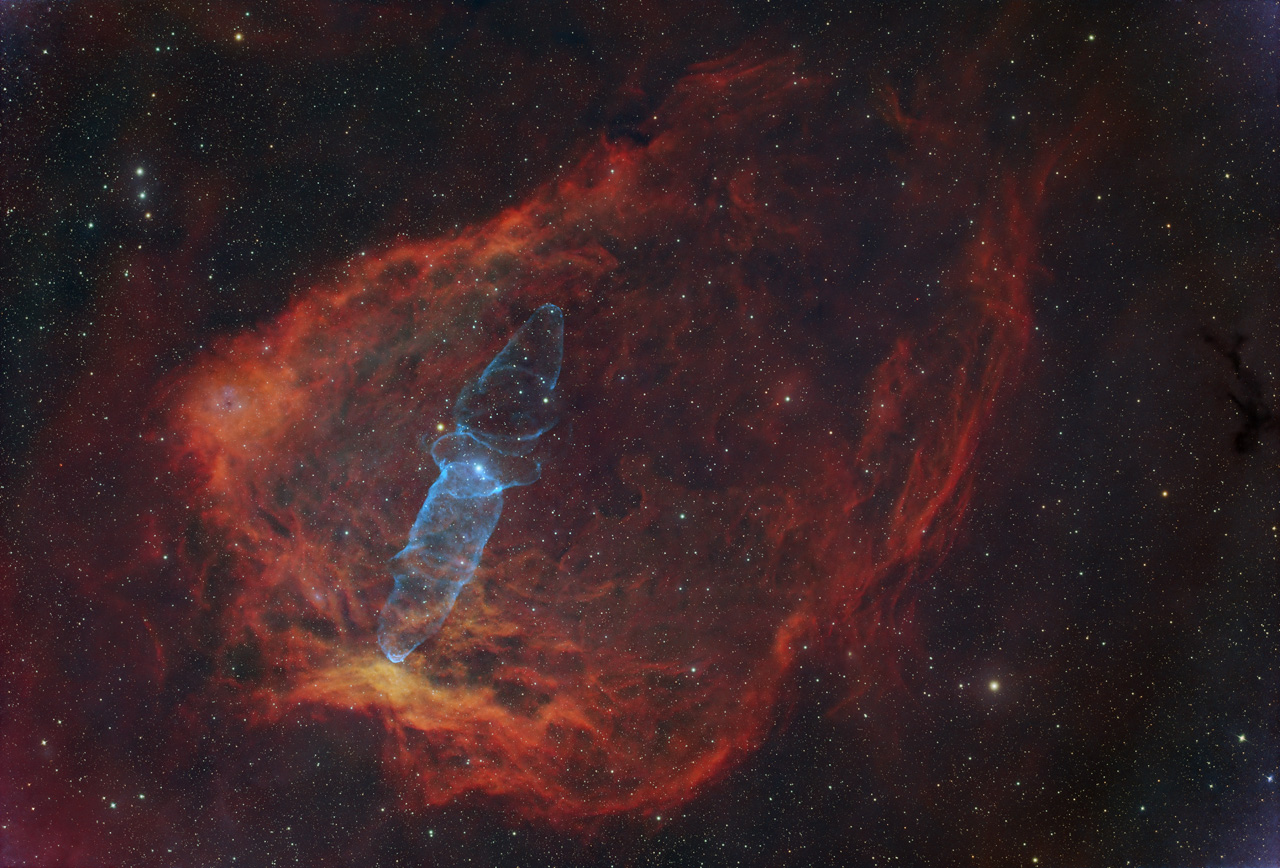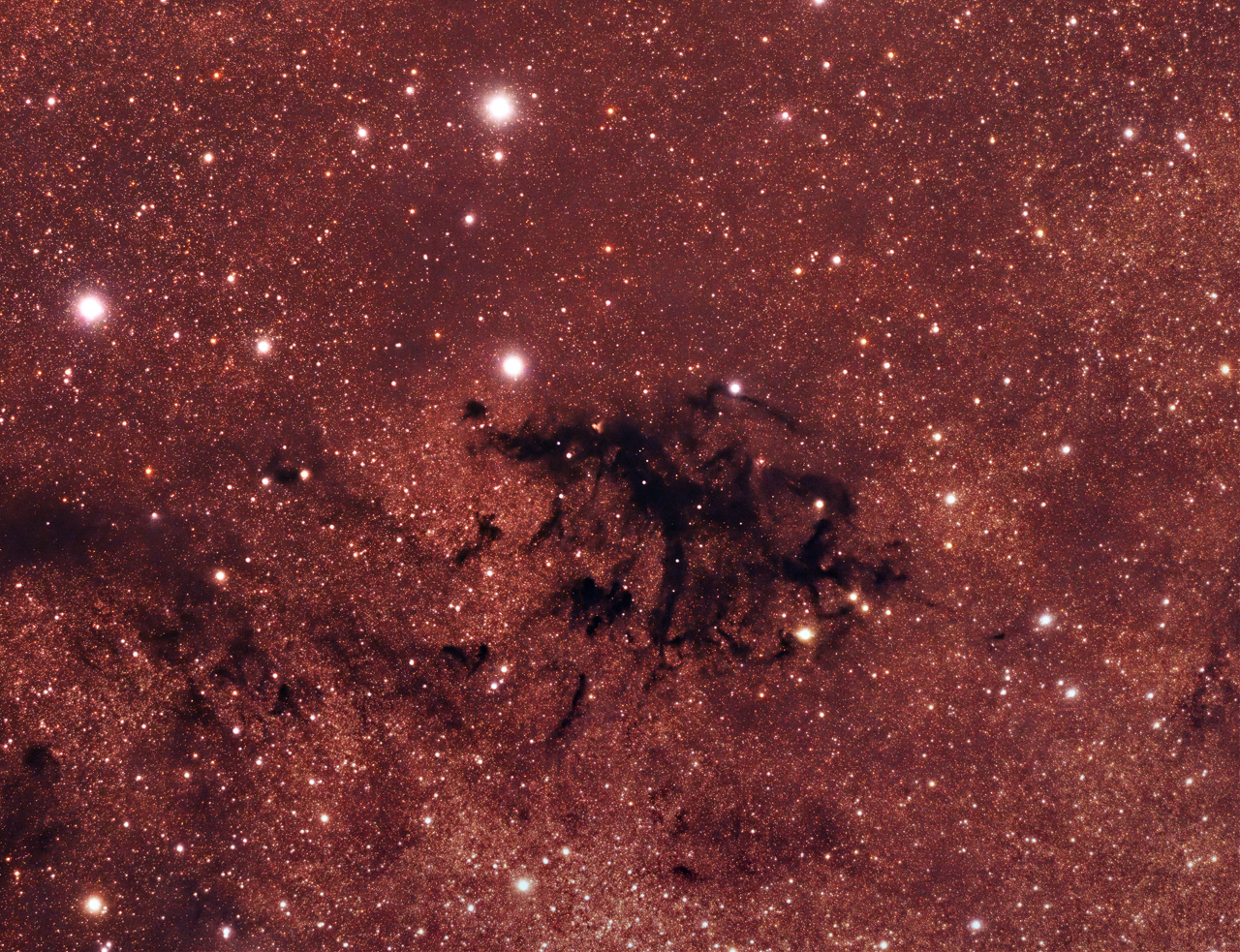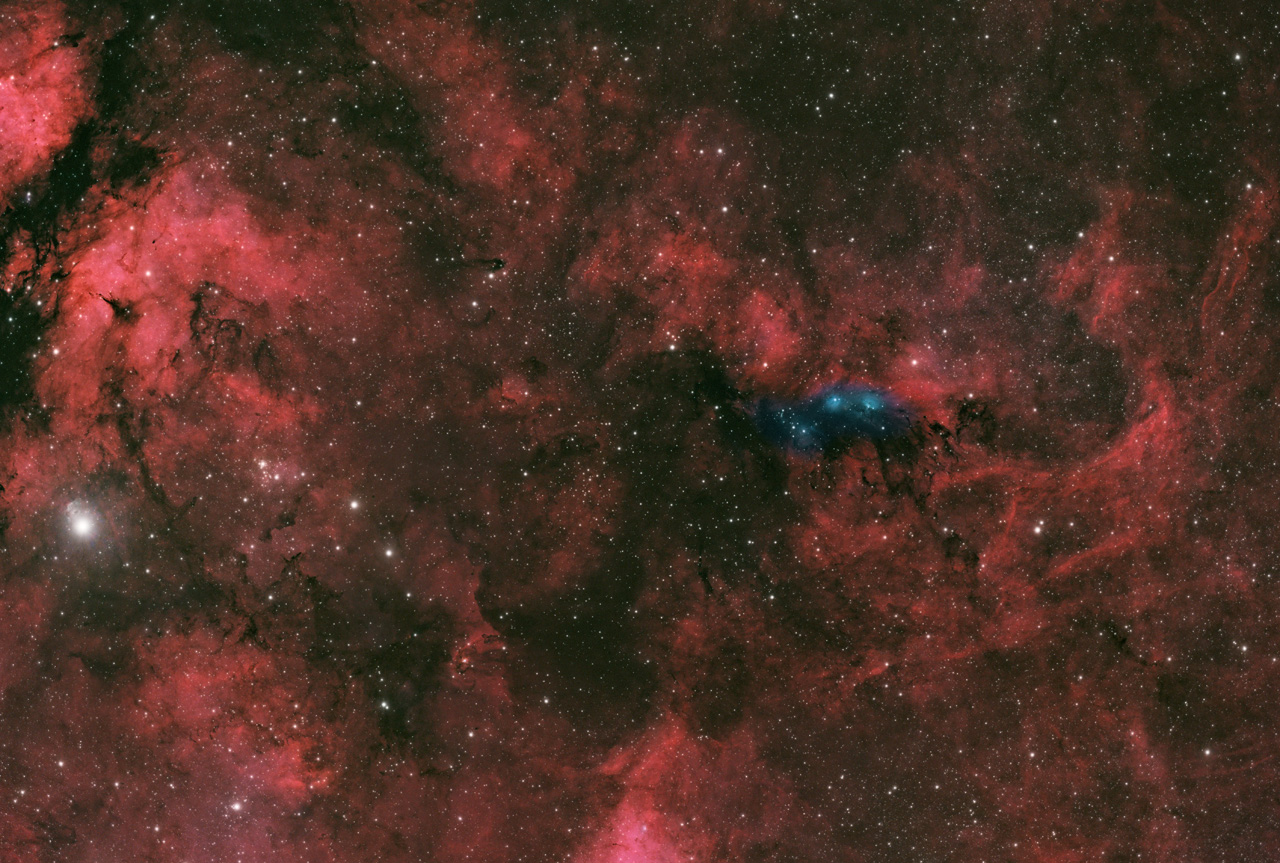Astronomers often use the phrase “first light” in reference to the first time some new equipment is used, especially a telescope. I’m looking forward to first light for my new observatory in Santa Fe, but these images are from my trip to the Pacific Northwest in August. The only new equipment there was my travel trailer!
I stayed at SkyView Acres (SVA) for most of the trip, and did all the imaging from there (see the Sept. 23rd post for a photo of my setup). I used the SVX80T ‘scope (with 0.74X reducer) for all the images, and it worked quite well for the Squid, but perhaps I should have switched to a longer focal length ‘scope for the others. The image above is actually a substantial crop of the full image:
One of the great things about the QHY268M camera I used is that it has enough resolution that even when heavily cropped you still get a good image. The reddish nebula around the Squid is the Flying Bat Nebula, which is made up of hydrogen and sulfur clouds. It isn’t a terribly interesting nebula by itself, partly because its structure is not well defined, although it does look a lot better here than in my previous attempts at this target.
Much is unknown about the Squid, but it is likely a planetary nebula (a shell thrown off by some stars when they reach the end of normal star life), and it is probably close to the Flying Bat Nebula.
All of the targets I imaged on this trip were ones I had done before, but with different gear. Below is LDN673, a dark nebula that I ran across many years ago. It’s not a very popular target, and doesn’t even have a common name, but I find it very interesting, if a little spooky:
The unusual background of reddish-brown “dust” happens because it is in a dense portion of the Milky Way (in the constellation Aquila). Some of it probably is actual dust, but there are also a huge number of small, faint stars in there.
This image is only slightly cropped, and a much wider field of view than my previous image of this target. I could have cropped it tightly around the “spooky” dark nebula in the center, but I thought it would be more interesting in the context of the surrounding area. Unlike the Squid Nebula images above, this is a broadband, natural color image. With better processing the bright stars would not be such large, blown-out blobs. I need to work on that, but am not totally unhappy with their appearance here.
Lastly, NGC6914 (another object without a common name) is a small, blue reflection nebula in the middle of a huge cloud of red hydrogen in Cygnus:
My earlier image of this target was at much higher magnification, with the blue reflection nebula nearly filling the frame. If you want to see the details of NGC6914 the close-up view is a better choice, but this view really makes the point that this is a lonely, out-of-place object. Perhaps it looks this way because it is feeling blue?
This is primarily a broadband, natural color image, but is enhanced with some H-alpha data to provide more detail in the red clouds of hydrogen.
The bright star on the left is Sadr, Gamma Cygni, which is the star at the center of the asterism of the Northern Cross, as well as the center of the constellation Cygnus.



